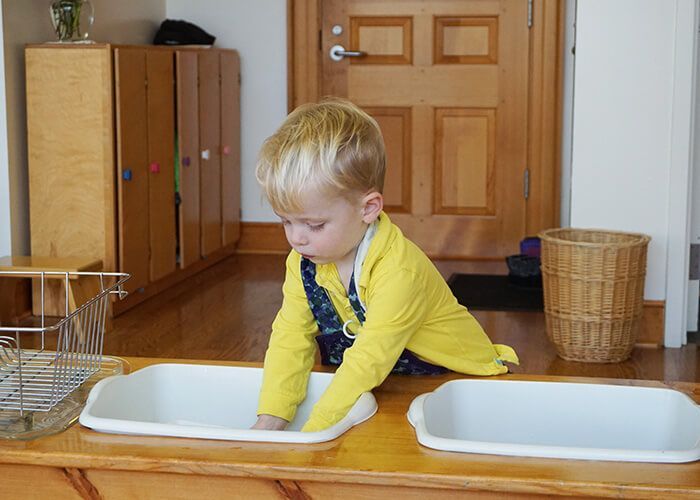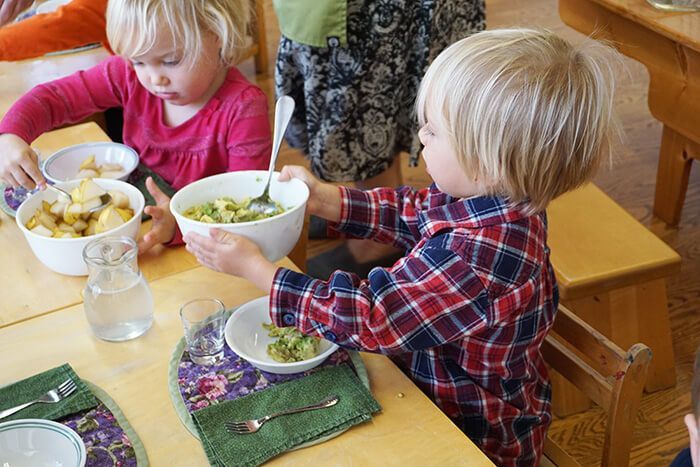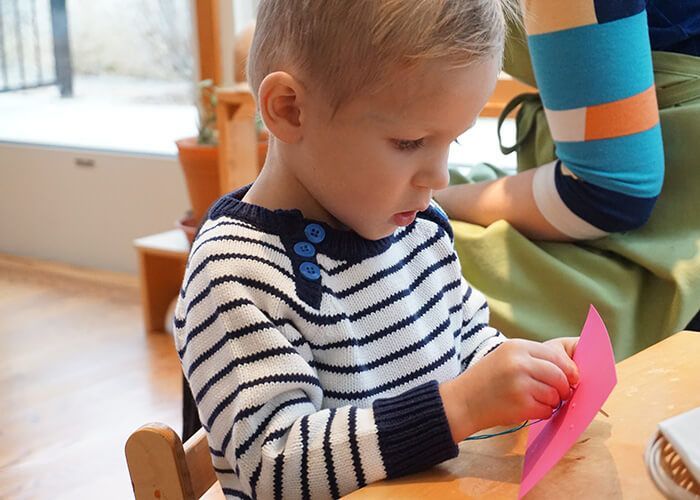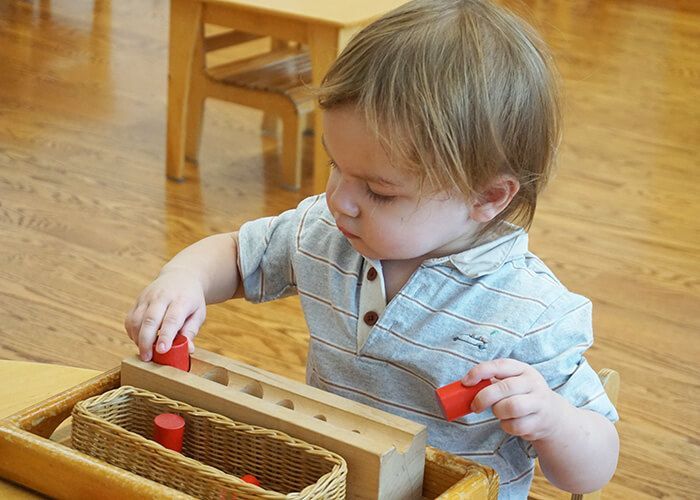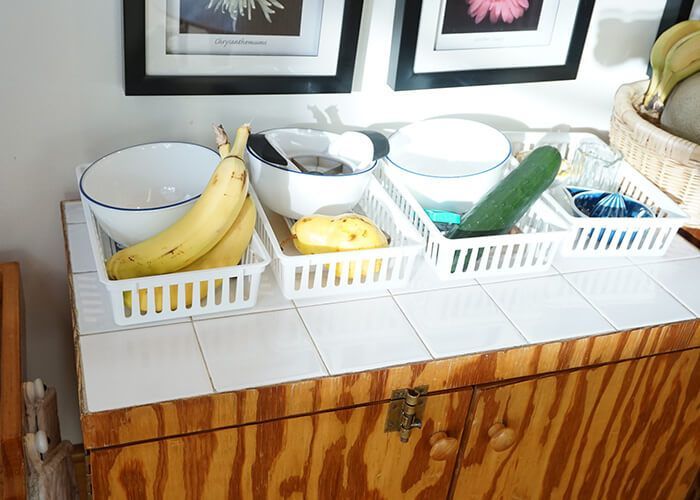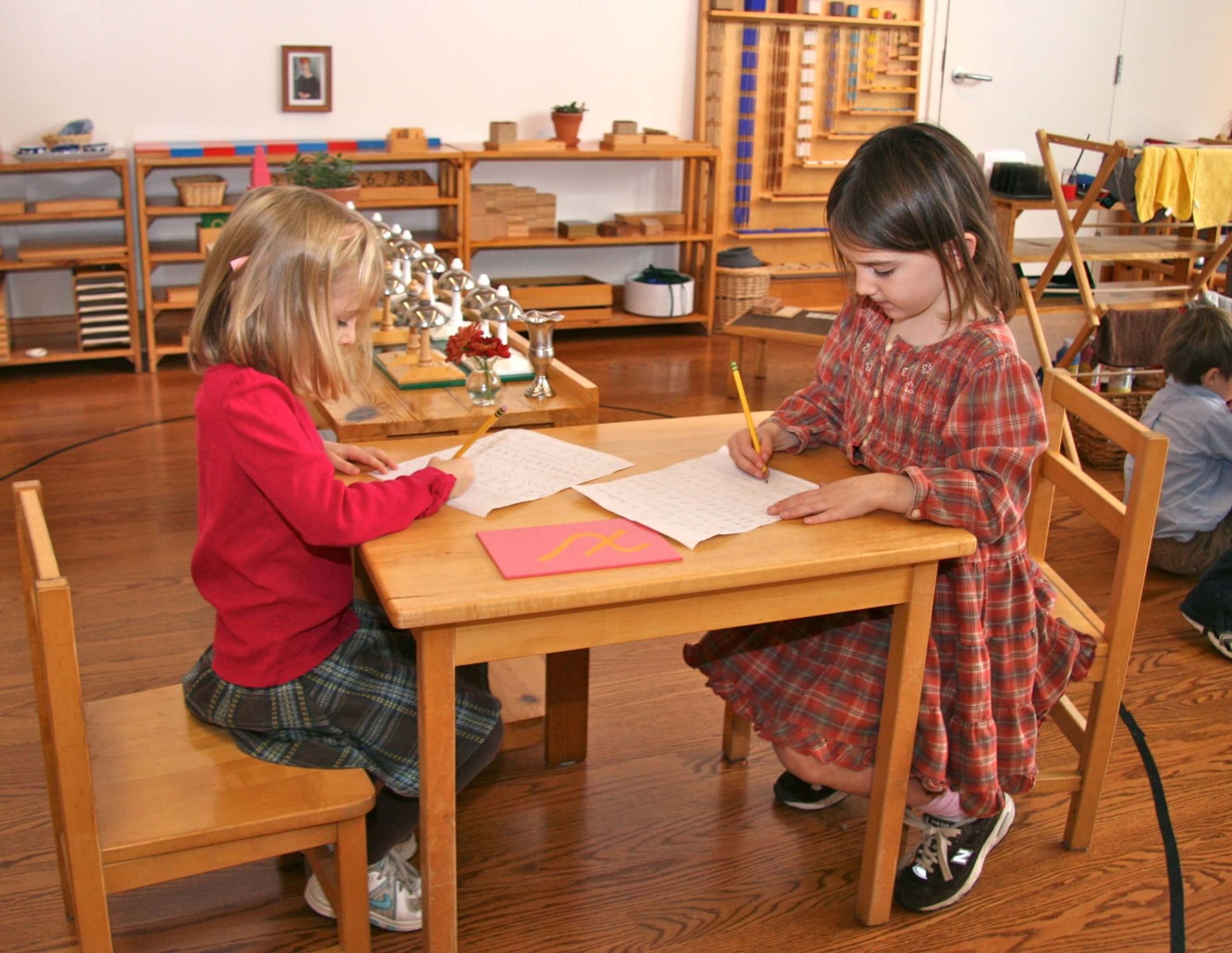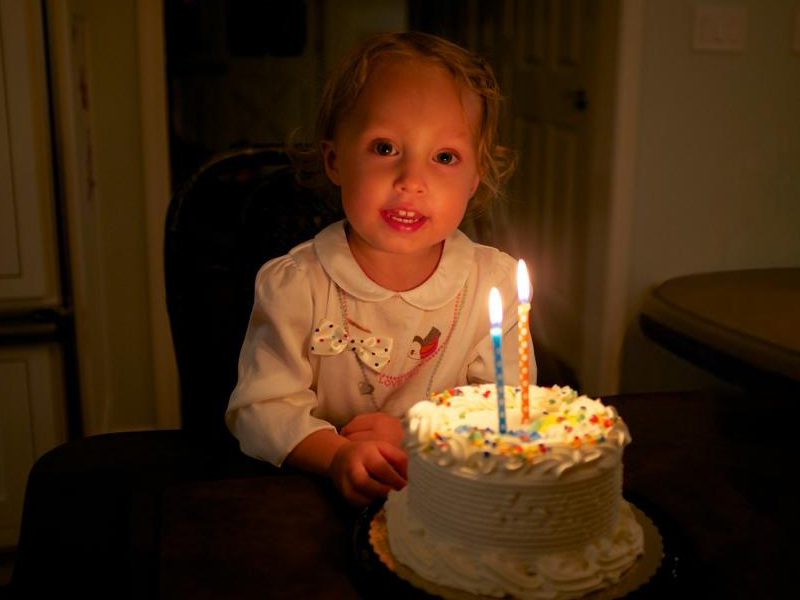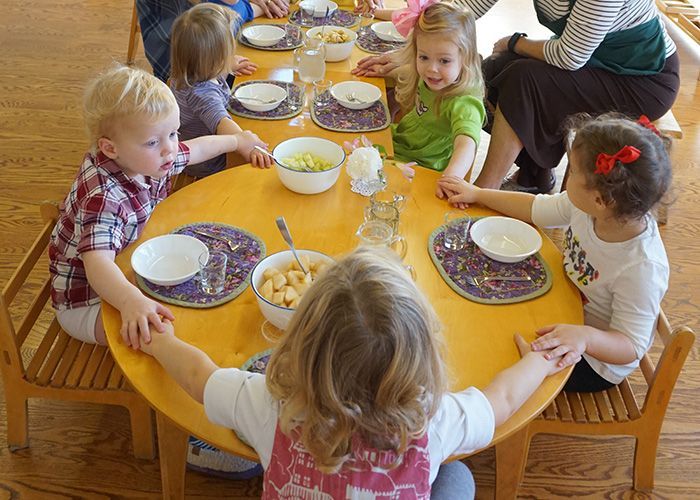
Why Go to School, Little One?
Sometimes people are surprised to hear that children can begin attending Forest Bluff School when they are only 18 months old. You may wonder, “What in the world can a one-and-a-half-year-old do in a school?” And yet, we know from research and observations that the first years of life are by far the most rapidly formative, important years of development, physically and psychologically. Dr. Montessori recognized that providing a special environment, designed to help young children in specific ways, makes sense. Once you see with your own eyes what the littlest children do in a prepared Montessori environment, skepticism evolves into awe.
In a Young Children’s Community of 18-month to 3-year-olds, we see children removing their own coats and reaching up to hang them on hooks at eye level in their cubbies, choosing work from the shelves that come to their waist height, and carrying materials to small tables or rugs where they decide to do their “work.” Once there, young children focus their attention on tasks that interest them greatly, using their hands, thinking through the steps, experimenting with the materials, and communicating with their teacher and fellow classmates.
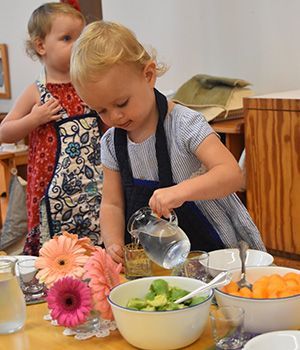
At a time in life when they are intensely concentrating on developing body control, thought processes, and the abilities to communicate their emotions and thoughts, very young children benefit tremendously from being in a learning environment that provides activities that perfectly meet their developmental characteristics and needs. Manipulative materials provide opportunities to develop hand-eye coordination. Language materials give ample experience with new vocabulary and pronunciation aided by the adults in the room. Practical Life activities help children form understandings of sequences, muscle control, memory, and logical thinking. The roots of music, artistic expression, biology, counting, measuring, and more are presented in a rich learning environment that young children feel safe to explore. Most important perhaps, is the confidence that young children build in their daily successes and the awareness of others in a community with an understanding of their own role within it. This confidence gives children the springboard to learn and develop at nature’s pace, without being held back from lack of exposure or by environments that do not match their developmental characteristics and needs.
At Home
Being at home with their families is invaluable for very young children, too. Most parents find that when their 18-month-old children spend three hours at school, there is still plenty of time to connect at home as well, even when they attend a Montessori program five mornings a week. The continuity and regular morning schedule allows children to calmly settle into a routine that makes sense to them. While parents have their time to get things done without children in tow, young children get to go do their “work” at the same time. At lunchtime when they are reunited, parents can give their full attention to their children and still have several hours together after nap time as well.
If parents could provide all the opportunities and atmosphere for optimal development in our homes, a Young Children’s Community would not be necessary. But realistically, with our attention divided, the phone and door bell ringing, emails coming in, and so many complex demands in our home lives these days, it is more challenging for young children to develop the deeper focus and to access activities that truly help them in their development.
A Special Learning Environment
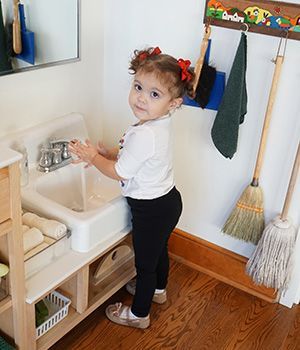
Bringing young children to a safe place where they have a peaceful atmosphere, respect, and attentiveness from trained teachers, and where they can move at their own pace as they become masters of their own bodies and minds, is a gift. The Young Children’s Community, with useful but tiny objects and perfectly-sized furniture, functioning refrigerator, sink, toilet, and toaster oven, all down at their level, empowers young children to boldly learn how to take care of themselves and contribute to others. Because Montessori teachers are trained to recognize developmental stages and needs, they are uniquely poised to help children when and where it matters most. The moments for language development, understanding processes and sequences for logical thinking, and setting the foundation for mathematical and higher thinking are attended to.
Furthermore, as human beings, we are designed to connect with others. Our young children have this need from the beginning of life. Their social development, self-awareness, and communication skills need attention to develop well in the early years. So, come to school, Little Ones! The Montessori Young Children’s Community is here for you at Forest Bluff.
Listen to Building a Foundation for Life to learn more about how the Young Children’s Community supports the development of children under the age of three.
